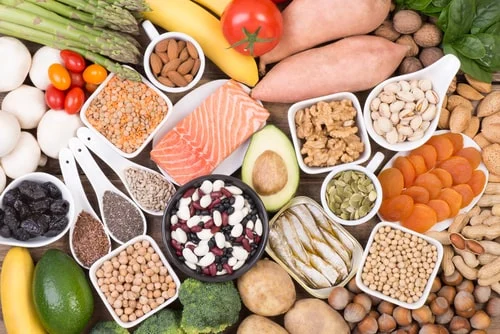Iron: A Mineral That Keeps Anemia at Bay
July 13, 2022

Since ancient times, man has known about the special role played by iron in health and disease; however, the most important role of iron is the synthesis of hemoglobin (a protein in your red blood cells that carries oxygen to various organs of the body). Discover more about the benefits of iron, iron-rich foods, and what happens if you don’t have sufficient iron in your body.
Role of Iron in your Body
Iron is an important mineral and is essential for normal blood production. Some of its functions are:
Production of red blood cells
Synthesis of connective tissue (collagen) and certain chemicals in the brain
Production of certain enzymes and hormones
What Happens if You are Deficient in Iron?
If you have lesser-than-normal iron in the body, you can develop a condition with fewer red blood cells, known as iron deficiency anemia.
Some of the symptoms of iron deficiency anemia are:
Headache and dizziness
Fatigue
Shortness of breath
Dry skin and hair
Palpitations
Soreness of mouth and tongue
Restless legs
Strange cravings, such as for ice, paper, dirt, or chalk (pica)
Poor diet, blood loss, or inability to absorb iron from food are some causes of iron deficiency anemia. Of note, women having periods or who are pregnant and young children are at a greater risk of iron deficiency anemia.
Is too much Iron Bad for Health?
Yes, higher-than-normal iron levels can be detrimental for health, especially in kids. A few side effects of high iron levels are:
Stomachache
Constipation
Vomiting
Higher levels of iron are usually caused by consuming an inappropriate dose of iron supplement.
How Much Iron Does Your Body Actually Need?
The Recommended Daily Allowance (RDA) of iron depends on various factors. The RDA for various groups is mentioned below (Table1):
Table 1: RDA of iron
Age/gender | RDA in mg/day |
|---|---|
7- 12 months | 11 |
1- 3 years | 7 |
4- 8 years | 10 |
9- 13 years | 8 |
14- 18 years (boys) | 11 |
14- 18 years (girls) | 15 |
Adult men | 8 |
19- 50 years (women) | 18 |
51 years and above (women) | 8 |
Pregnant women | 27 |
Lactation (14- 18) | 10 |
Lactation ( 19- 50) | 9 |

Get Iron by consuming these Iron Rich foods
There are two main types of iron obtained from food. Iron found in animal sources is known as heme iron and that found in plants is known as non-heme iron. Sources for both are mentioned below
Heme iron:
Fish
Chicken
Lean beef
Turkey
Lean pork
Non-heme iron:
Coriander seeds
Soyabean
Amarnath seeds
Whole lentils
Parsley
Pumpkin leaves
Dried fruits such as raisins, apricots, and prunes
Dark green leafy vegetables, such as kale and spinach
Iron is an important mineral that plays an important role in producing red blood cells. Consume a variety of heme and non-heme iron to prevent iron deficiency anemia.
Interesting fact:
Iron helps remove carbon dioxide from the body!!
We have started an A-Z, blog-series on nutrients, covering all your vitals in one place! Write to us at info@labelblind.com if you would like a specific nutrient of interest to be covered, we would love to keep that as our priority!

Rashida Vapiwala (Founder at LabelBlind®, Food Label Specialist, Ph.D (Food Science and Nutrition))
Rashida is passionate about solving problems for the food industry using technology. She loves creating tech-led solutions in the space of Nutrition.
